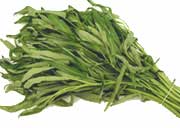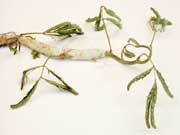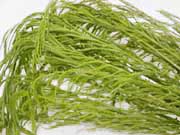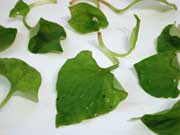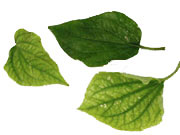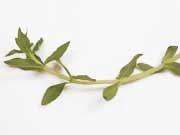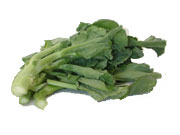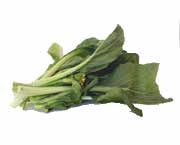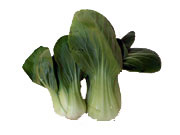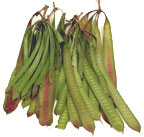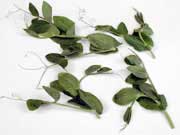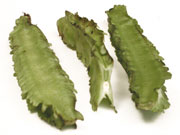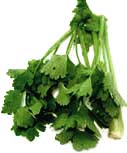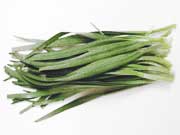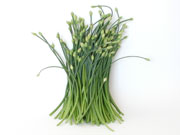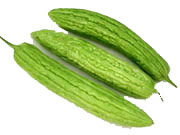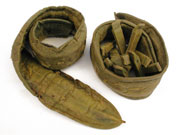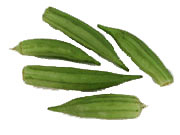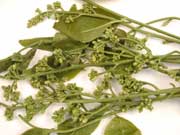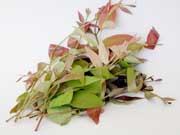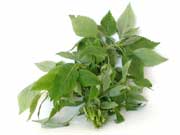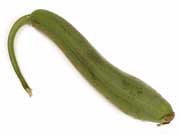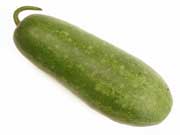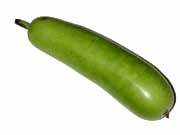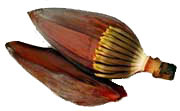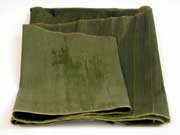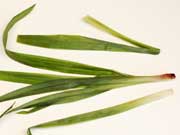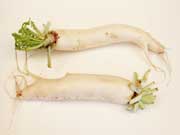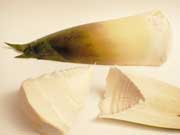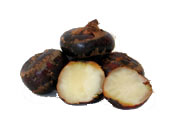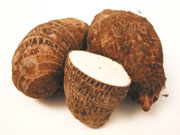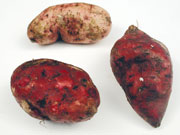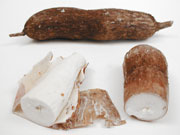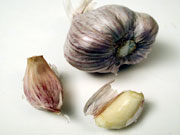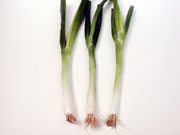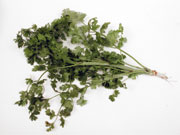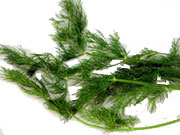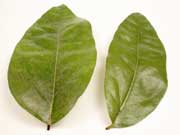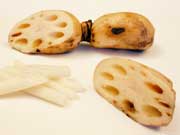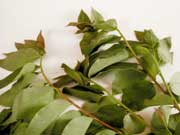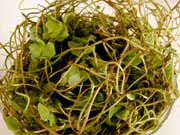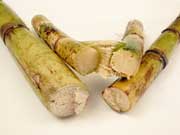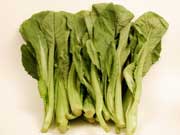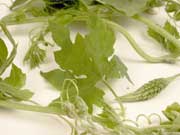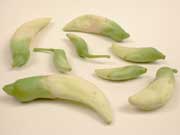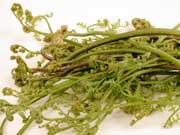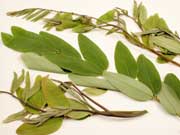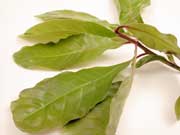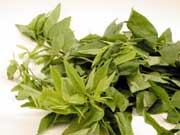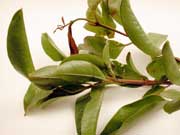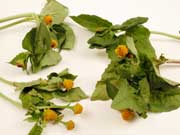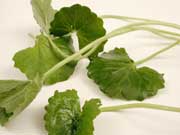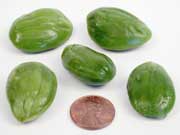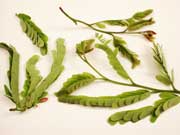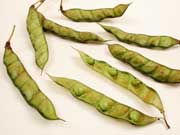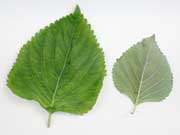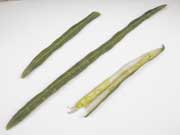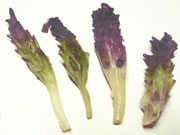Supatra's Guide to Vegetables, Herbs
and Roots used in Thai Cooking
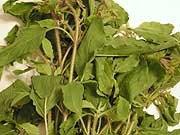
Holy Basil (Bai Grapow)
Peppery is perhaps the best way to describe this type of basil, which is used in stir-fries. Holy Basil is typically not eaten raw and can be frozen or dried for later use.
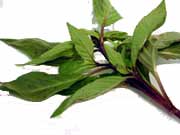
Thai Basil (Bai Horapha)
With an anise-like flavor, Thai basil is used in curries and stir-fries. It's also eaten fresh with noodle soup and will not keep for long (it also does not freeze or dry well).
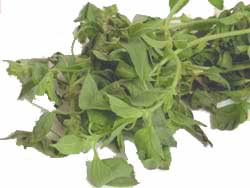
Lemon Basil (Bai Maeng-luck)
Used in soups and to flavor steamed fish and vegetables, lemon basil has a real citrus-like aroma and flavor. It can be frozen or dried for later use (called e-too in Lao).
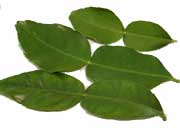
Kaffir Lime leaves (Bai Makrut)
Lime leaves are used whole in soups and curries and cut-up for salads. They can be preserved in the freezer.
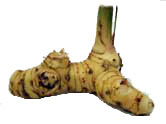
Galanga (Kah)
Galanga is used in soups such as Tom Yum and Tom Kha Gai, curry pastes and is sliced up for use in salads.
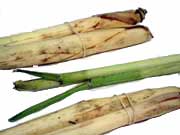
Lemon Grass (Ta Khrai)
Lemon grass is used in soups such as Tom Yum and Tom Kha Gai. It's sliced for use in salads as well.
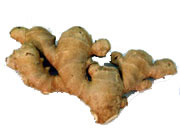
Ginger (King)
Ginger is used in many different dishes. It's spicier than galanga and the skin must be peeled before using.
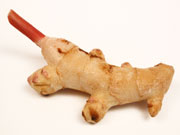
Young Ginger (King On)
Young Ginger is picked earlier than ginger and has a more subtle flavor. The skin can be left on for cooking.
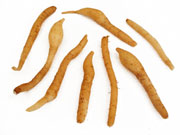
Krachai (Rhizome)
Krachai, a relative of ginger, is used in Kanom Jeen Numya, a curry dish. It's available frozen or in jars (shredded or whole).
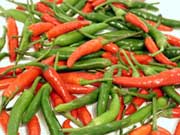
Thai Chili (Prik Kee Noo)
Thai chili is used in many Thai dishes and is often eaten raw, too. Prik lee noo is phet! (Hot)
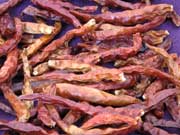
Dried Thai Chili (Prik Hang)
Dried Thai chili is used in soups, salads and stir-fries and is ground or served whole.
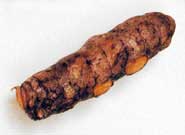
Turmeric (Kamin)
Turmeric, a relative of ginger, adds yellow color to food and is an integral ingredient in curry powder and some curry pastes.
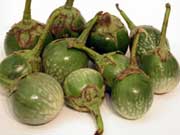
Thai Eggplant (Makuea Praow)
Thai eggplant is used in curries, Som Tum, and is eaten raw.
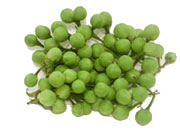
Cherry Eggplant (Makuea Poo-ung)
Cherry eggplant is used in curries and is eaten with Nam Prik. It's very bitter!
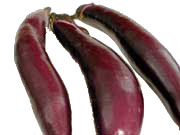
Chinese or Purple Eggplant (Makuea Muang)
Chinese eggplant is used is used in stir-fries or is steamed.
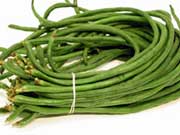
Long Bean (Tua Fak Yaow)
Long bean is used in curries, stir-fries, and Som Tum (Green Papaya Salad). They're crunchier than regular green beans.
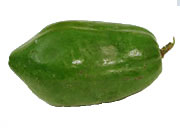
Green Papaya (Malagaw)
Green papaya is shredded to make the famous spicy Thai salad called Som Tum! Green unripe papaya is available in most Asian markets.
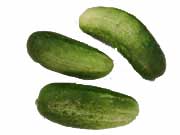
Pickle (Tang Kwa)
Pickling cucumbers are crunchier than regular cucumbers and are eaten raw or used to make a salad called Tum Tang (it's similar to Som Tum).
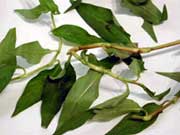
Pac Peow (Bai Prik Ma)
Pac Peow is eaten raw with salads or noodles. Pac peow can be found in many Southeast Asian markets.
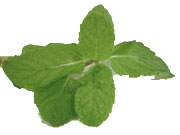
Mint (Salanae)
Mint is used in Laab and other salads and is served with noodle soup.
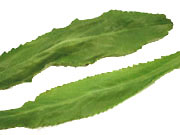
Culantro (Pak Chee Farang)
Culantro is usually eaten raw and can also be cut up and added to Laab (Isaan Meat Salad).
